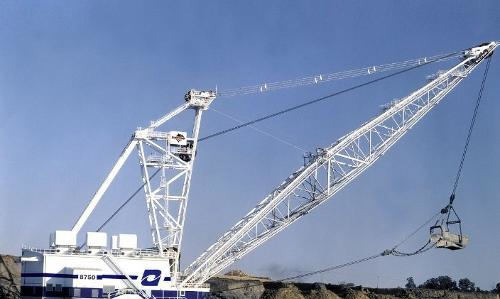The dragline is not flexible enough when loading the truck, the accuracy is not enough, and the efficiency is relatively low. This limits its application, and construction draglines are mainly used for underwater excavation.
Larger draglines have found their place in open-pit mines, with extra-long booms that allow for a large working range and deep digging depth, ideal for overburden stripping in coal mines. In order to pursue efficiency. People make the dragline bigger and bigger, and the working weight increases so much that the crawler travel mechanism can't bear it. To this end, a step-by-step running mechanism is applied to the dragline to reduce weight.

The dragline is lighter in weight due to its simple structure, while its working range is larger than that of the stripping shovel. Therefore, the efficiency is higher than that of the peeling shovel, and the ton cost is lower than that of the peeling shovel. If the stripping shovel wants to increase the working range, it needs to lengthen the boom and stick, which will lead to a sharp increase in the weight of the structure, so its working range is limited, while the dragline only needs to increase the length of the boom to increase the working range, and the weight of the structure increases. The speed is slower, while in operation, inertia can also be used to throw the bucket out to further increase the working range. But for a long time. For decades, the stripping shovel concealed the light of the dragline, and the dragline seemed to be unknown. After the stripping shovel competition, the stripping shovel also withdrew from the stage of history. The dragline became the king of coal mine stripping and the ultimate excavation equipment with the strongest production capacity, highest efficiency and lowest ton cost in open-pit coal mines.